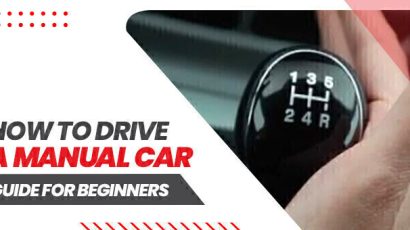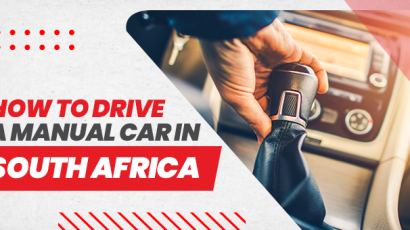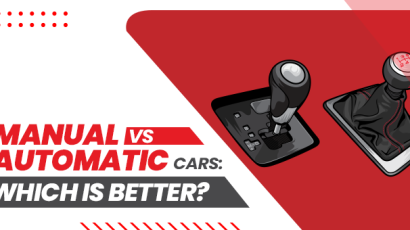
Manual cars are more liked by those who have been driving manual or learned to drive on it. However, those who started their driving journey with automatic cars are not comfortable with a manual at all. Driving a manual car can be challenging, especially for new drivers. It requires multitasking and a lot more focus than automatic. This article will highlight the dos and don’ts of driving a manual car to make you a better driver for manual cars;
Do Learn The Basics Of Manual Car Gears
Before you try to drive a manual car, it is necessary to understand the gearwork. Manual cars have three pedals: accelerator, brake, and clutch. You use the clutch to change gears, brakes to slow down the car or stop it, and accelerator to control speed. A gear stick is also at the center console, which helps you pick the appropriate gear. Understanding these pedals is basic, without which you cannot even start a manual car. The brake pedal has to be pressed in tandem with the clutch pedal for the car to slow down or stop. If it is not done properly, the car can stall or turn off.
Don’t Forget To Release The Handbrake
When starting the car, releasing the handbrake is mandatory before you try to move the car. If you fail to release the handbrake, it can cause damage to the engine. Handbrakes play an important role in manual cars.
Do Engage The Clutch Gradually
Another critical part while driving a manual car is engaging the clutch. Engaging the clutch slowly and smoothly is necessary to avoid bumpy movements or stalling. All you have to do is shift the gear stick to the proper position while depressing the clutch pedal with your left foot. Release the clutch pedal gradually while simultaneously using your right foot to depress the accelerator. It will take a lot of practice to get the hang of it, but you will.
Don’t Ride The Clutch
Riding a clutch can be damaging to the car. It will result in excessive wear and tear on the clutch mechanism, which will require pricey repairs in the end. When driving, avoid putting your foot on the clutch. It can eventually lead to the clutch slipping and wearing out faster.
Do Shift Gears At The Appropriate RPM
You should know what the appropriate RPM is and make sure you shift the gears accordingly. It is necessary for smooth and efficient driving. What is the appropriate range of RPM gears depends on the driving conditions and the car. In general, it is best to shift the gears at around 2,500 to 3,000 RPM in normal conditions.
Don’t Shift Gears Too Quickly
Avoid shifting gears too quickly. It can cause the car to stall or bog down. You should wait until the RPM drops to the appropriate level before you shift the gear. It helps in ensuring an efficient and smooth driving experience.
Do Use The Handbrake When Starting On A Hill
Driving on a hill can be challenging for manual car drivers, regardless of how experienced they are. You can make it a bit easier by using a handbrake to prevent the car from rolling backward while you start it. For this purpose, engage the handbrake when the car is in gear and then gradually release the clutch pressing down the accelerator at the same time. When the car starts moving, release the handbrake.
Don’t Downshift To Slow Down
Downshifting to slow the car down can result in excessive wear and tear on the engine and transmission. This will eventually cause costly repairs. It is, therefore, necessary to use the brakes to slow down or stop the car. Downshifting is not a good idea.
Do Practice In A Safe And Empty Area
For new manual car drivers, driving is challenging. Practicing in an empty, safe space, like an empty parking lot or playground, is mandatory. It helps you before going on the road. Initially, it is important for you to get familiar with the car and its components. Once you are comfortable and confident with the car, you can hit the road.
Don’t Panic When Stalling
Stalling happens and is a very common occurrence while driving a manual vehicle. Do not panic if it happens. Panicking can make the situation worse. Instead, take a deep breath, engage the clutch, and start the car again. Keep in mind that stalling is a normal part of the learning process, and practicing can make it happen less frequently.
Benefits Of Manual Cars
They still offer a number of advantages over automated vehicles. That is why even a century later, manual cars are still widely used. Old drivers used to manual cars do not prefer driving automatically. There are various benefits of manual cars, making them the best choice.
One of the key advantages of manual cars is that they offer a more enjoyable and engaging driving experience. Manual cars need the driver to change the gear manually, resulting in more control over the car. This is not seen in automatic cars. This is the main reason why manual car drivers do not like automatic cars.
Secondly, manual cars are more fuel efficient as compared to automatic cars. They need the driver to shift the gear, which helps optimize the engine’s performance and fuel efficiency. Moreover, manual cars are often lighter than automatic cars, which also helps achieve fuel economy. It indicates that manual cars are better in the current economy if you want an affordable car.
In general, manual cars cost less to buy and maintain than automatic cars. Compared to automatic cars, they are simpler and have fewer moving parts. When it comes to maintenance, manual autos are less expensive. It makes these cars more cost-effective for those who want pocket-friendly driving.
In addition to these practical benefits, driving a manual car can also provide psychological benefits. Driving a manual car is a satisfying experience because it boosts self-confidence and gives you more control over the vehicle. It is easier for manual car drivers to drive automatic cars, but it is very hard for automatic car drivers to drive manual cars. Hence, the achievement is double.
Although there are many advantages, manual cars also have some downsides. They are difficult to drive on hilly terrain and heavy traffic. Moreover, manual cars need the driver to shift gears manually. It can be tiring.
Conclusion
Driving a manual car requires patience, practice, and focus. You can become an efficient manual car driver by following the tips discussed. These considerations will make you enjoy your driving experience rather than make it stressful. Another thing to keep in mind is keeping your manual car well-maintained. It includes tire rotations, regular oil changes, and tune-ups, as they help us ensure that your car goes smoothly and efficiently. Visit SBT Japan to check the best Japanese manual cars in the market.
In conclusion, operating a manual car can be satisfying, but it takes perseverance, practice, and concentration. You may improve your driving skills and take advantage of the flexibility and control that come with driving a manual automobile by adhering to these 10 dos and don’ts for manual car drivers. Always drive safely and pay attention to your surroundings.











